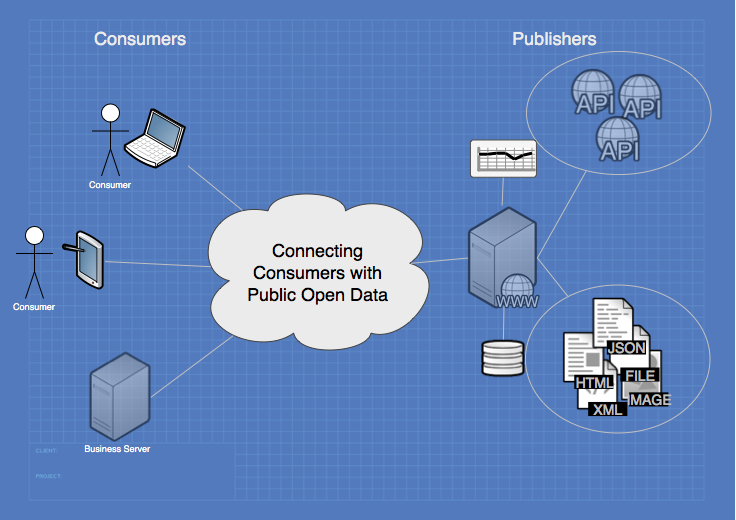Difference between revisions of "Main Page"
(There are many social and economic benefits to making data available for public use, including transparency, accountability, economic development, and knowledge creation. The most effective system for publishing and delivering data requires a structured,) |
|||
| Line 2: | Line 2: | ||
== A Blueprint and Implementation of a Public Data Ecosystem == | == A Blueprint and Implementation of a Public Data Ecosystem == | ||
[[File:image001.png]] | [[File:image001.png]] | ||
| + | |||
| + | |||
| + | == Overview == | ||
| + | The open data movement is gaining more momentum and is based on the assumption that more intensive and creative use of information and technology can improve policy-making and generate new forms of public value. Making data available for public use promotes transparency and accountability, economic development and expanded networks for knowledge creation. Past efforts in making data public has resulted in data being published in an ad-hoc manner, often through grass-roots efforts, with little consideration of access management, accountability or analytics. Consumers of public data want assurance that the data collection, management, access and dissemination practices used result in data provided that is valid, sufficient and appropriate for policy analysis or any other use. Data publishers must adhere to lifecycle processes in order to assure that the data accurate but is also fit for use considering both subjective perceptions and objective assessments which will have a bearing on the extent to which users are willing and able to use information. A systematic approach with an enterprise lifecycle perspective must be used to enable the full potential of open data. The most effective open data ecosystem produces benefits for the data consumer and the data provider but requires a structured, governed approach for supporting open data use. A civic effort in Minnesota has created a blueprint that addresses the strategy, design, deployment, operation and continual improvement of a public storefront to publish, discover, govern and manage publicly available data. | ||
Revision as of 11:17, 8 December 2014
A Blueprint and Implementation of a Public Data Ecosystem
Overview
The open data movement is gaining more momentum and is based on the assumption that more intensive and creative use of information and technology can improve policy-making and generate new forms of public value. Making data available for public use promotes transparency and accountability, economic development and expanded networks for knowledge creation. Past efforts in making data public has resulted in data being published in an ad-hoc manner, often through grass-roots efforts, with little consideration of access management, accountability or analytics. Consumers of public data want assurance that the data collection, management, access and dissemination practices used result in data provided that is valid, sufficient and appropriate for policy analysis or any other use. Data publishers must adhere to lifecycle processes in order to assure that the data accurate but is also fit for use considering both subjective perceptions and objective assessments which will have a bearing on the extent to which users are willing and able to use information. A systematic approach with an enterprise lifecycle perspective must be used to enable the full potential of open data. The most effective open data ecosystem produces benefits for the data consumer and the data provider but requires a structured, governed approach for supporting open data use. A civic effort in Minnesota has created a blueprint that addresses the strategy, design, deployment, operation and continual improvement of a public storefront to publish, discover, govern and manage publicly available data.
